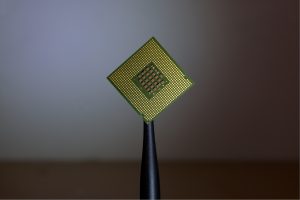
Walter is the Managing Partner and Senior Legal Consultant at…
Read Next
Intellectual Property
This is defined as intangible property that entails creations of the mind that include patents, trademarks, industrial designs, literary and artistic works that are used in commerce.
IP is divided into two categories:
Industrial Property, which includes patents for inventions, trademarks, industrial designs and geographical indications; and
Copyright, which covers literary works (such as novels, poems and plays), PIN IT
PIN IT
Intellectual Property Rights
Intellectual property rights, like any other property rights, allow creators, or owners, of patents, trademarks or copyrighted works to benefit from their own work or investment in a creation.
These rights are protected by various types of intellectual property law:
• Trade Marks
• Patents and Utility Models
• Industrial Designs
• Copyright and related rights
• Plant breeders varieties
• Traditional knowledge
According to the World Intellectual Property Organization or WIPO, the reasons for their protection have been linked to the need for invention for the progress and well-being of humanity, to encourage commitment of additional resources for further innovation and to spur economic growth.
What do some of the terms mean?
Patents
A Patent is the exclusive right granted by a government to an inventor to manufacture, use or sell an invention for a certain number of years, in return for disclosure of technical information, so that it can be used or worked by a person skilled in the art.
It has its origins in 16th and 17th Century Britain whereby the Crown granted privileges to subjects in return for the subjects performing certain duties. This was done, initially, via open letter from the Crown to the subject.
What can be patented?
A wide range of items can be patented, ranging from new and novelty  PIN IT
PIN IT
Copyright
Copyright provide authors, artists and other creators protection for their literary and artistic creations, generally referred to as “works”.
Copyright regulates the creation and use made of a wide range of cultural goods such as books, songs, films, paintings, handicrafts, photographs, music, computer programs among other things.
Copyright automatically becomes an enforceable claim to the author once a work is produced in material form.
Copyright duration:
1. For literary, music or artistic work, other than photographs, copyright applies 50 years after the end of the year in which the author dies.
2. For audio visual works and photographs, copyright applies 50 years from the end of the year in which the work was either: made, first made available or first published, whichever date is the latest.
3. For sound recordings, copyright applies 50 years at the end of the year in which the recording was made.
4. For broadcasts copyright applies 50 years after the end of the year in which the broadcast took place.
 PIN IT
PIN IT
Exceptions include, among others: fair dealing, private use, criticism or review, all subject to acknowledgement of the source.
Trade Marks
According to WIPO, a trade mark is a sign capable of distinguishing the goods or services of one enterprise from those of other enterprises.
This can be in the form of a slogan, a device, a brand, a heading, name, a smell and even a sound, among other things, presented in two or three dimensional form.
Rights conferred
The trade mark confers exclusive rights to the use of the mark in relation to the goods,subject to any conditions or limitations imposed and recorded in the register.
Industrial Designs
According to WIPO Industrial Design refers to the ornamental or aesthetic aspects of an article, such as the shape or surface of an article or two dimensional features such as patterns, lines or color.
Generally this means that whatever composition that gives special appearance to a product of industry or handicraft and can serve as a pattern for such is considered to be an Industrial Design.
Rights conferred
The right to sell or cause to be sold for commercial or industrial purposes.
Subscribe now for updates from Msingi Afrika Magazine!
Receive notifications about new issues, products and offers.
What's Your Reaction?
 PIN IT
PIN ITWalter is the Managing Partner and Senior Legal Consultant at Owaga and Associates Advocates. Walter has over 12 years of broad experience in Commercial Litigation, Corporate Law, Legal Advice, Intellectual Property, Legal Research, Legal Writing, Corporate Governance, Civil Litigation, Legal Compliance, Due Diligence, Employment Law, Mediation, among others.





















